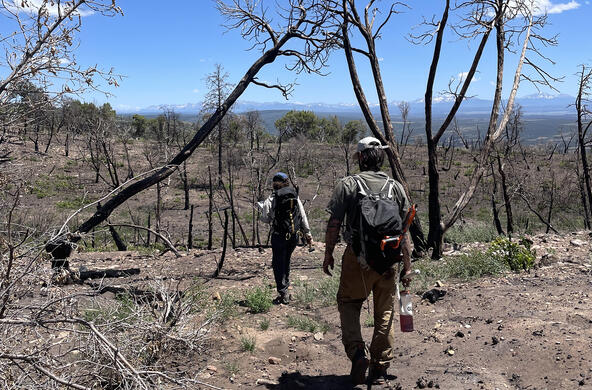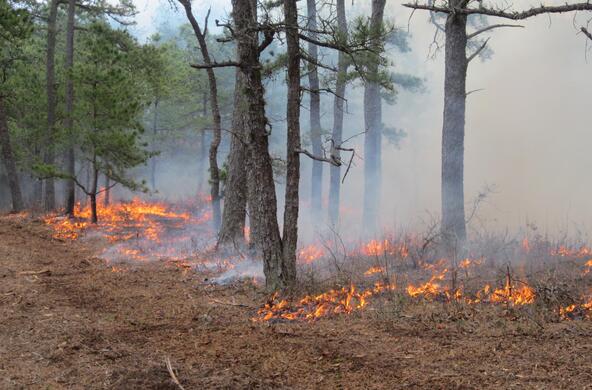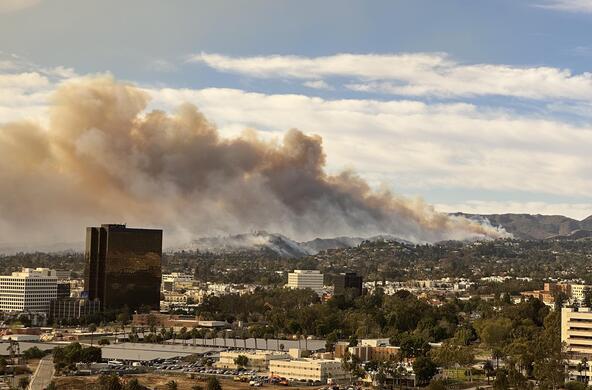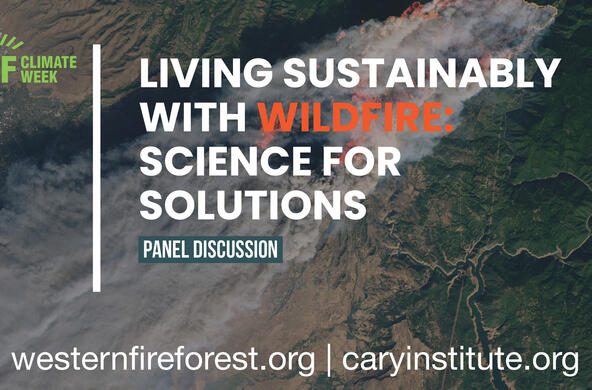Since 1984, the annual burned area in Western forests has increased by more than 1300%.
Forests in the Western US have been living with fire for thousands of years. Some even benefit from fire. But climate change and a legacy of fire suppression are making today’s fires larger, more frequent, and more destructive. As a result, some forests and communities may never recover.
Cary is working to shift the balance of wildfire from devastating to sustainable.
Working with communities in the line of fire. Our research questions are guided by forest stewards and decision makers, ensuring we generate scientific insights that will be immediately useful for those who manage and live with fire.
Identifying the mechanisms of forest resilience. In field experiments, we’re studying the factors that influence why some forests bounce back after a fire, while others transform, sometimes tipping to grasslands. This data will be vital to practitioners weighing the long-term benefits and consequences of fire and forest management decisions.
Building an unprecedented fire and forest model. Never before have fire and forest behaviors been combined into one large-scale, high-resolution model, even though these two systems are closely linked in the real world. By melding the best in fire modeling with the best in forest modeling, Cary scientists can test new fire management strategies and weigh the outcomes of different actions, such as prescribed burning and mechanical thinning.
Tracking the movements of wildfire smoke. Smoke from wildfires can have far-reaching impacts on human health, ecosystems, and the economy. To reduce these impacts and protect people, Cary scientists are investigating new ways to monitor wildfire impacts on air quality using satellite data.
Balancing carbon storage in a more fire-prone future. In places like interior Alaska, forest fires threaten to release vast amounts of carbon to the atmosphere, setting back global climate-mitigation efforts. Where and when are fire suppression strategies the most effective way to manage the carbon stored in boreal forests? Would reseeding or replanting after fire be more effective? Cary scientists are investigating these questions and more. Using remote sensing, simulation modeling, and artificial intelligence, we aim to equip the fire management community with insights to underpin strategies that maximize forest carbon storage.
By connecting on-the-ground management expertise with our top scientists and best-in-class research tools, Cary is catalyzing the science needed to inform wildfire adaptation and resilience, to better protect people and ecosystems threatened by fire.
The window of opportunity to do something about the fire crisis is closing — and fast. We desperately need the best available science to figure out how to scale solutions from the individual forest stand to the continent.
Winslow Hansen, Forest Ecologist




